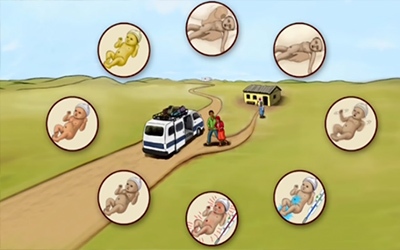The modified three delays model responsible for newborn death shows that household and health facility related delays were the major contributors to late presentation, treatment initiation and subsequent newborn deaths in many developing countries. These delays especially at the household level are particularly important because once there is a delay in the recognition of the danger signs of newborn illnesses there are automatically delays at all other levels i.e. initiation of appropriate treatment or referral to a better resourced hospital etc. Therefore, it becomes necessary to survey the knowledge of the signs which mothers in the developing country may perceive as “danger signs” (signs leading either to recognition of illness or heath care seeking) in the sick newborns.

Neonates and young infants often present with non-specific symptoms and signs that indicate severe illness. These signs might be present at or after delivery or in a newborn presenting to hospital or develop during hospital stay. The aim of initial management of a neonate presenting with these signs is stabilization and preventing deterioration. The signs include:
- Not feeding well
- Convulsions
- Lethargy
- Movement only when stimulated or no movement at all, fast breathing (60 breaths per min)
- Grunting
- Stiff limbs
- Capillary refill more than three seconds
- Severe chest in-drawing
- Hyperthermia, > 37.5 °C
- Hypothermia, < 35.5 °C
- Central cyanosis
- Redness around umbilicus or umbilicus draining pus

Emergency management of danger signs:
⦁ Open and maintain airway. Give oxygen by nasal prongs if the young infant is cyanosed or in severe respiratory distress or hypoxemic (oxygen saturation < 90%).
⦁ Give bag and mask ventilation with oxygen (or room air if oxygen is not available) if there is apnoea, gasping or respiratory rate too slow (< 20).
⦁ Insert venous cannula.
⦁ Give ampicillin (or penicillin) and gentamicin.
⦁ Check blood glucose, if drowsy, unconscious or convulsing, check blood glucose. If glucose < 2.2 mmol/l (< 40 mg/100 ml), give 10% glucose at 2 ml/kg IV. Then give a sustained IV infusion of 5 ml/kg per h of 10% glucose for the next few days while oral feeds are built up.
If you cannot check blood glucose quickly, assume hypoglycemia and give glucose IV. If you cannot insert an IV drip, give expressed breast milk or glucose through a nasogastric tube.
- Give phenobarbital if convulsing with loading dose of 20 mg/kg IV.
- Admit
- Give vitamin K (if not given before)
- Give IV fluid if needed.
- Monitor the infant frequently.
Essential steps for newborn care:
Routinely check up
Skin to skin care
Cord care
Delayed bathing (After 3 days)
Exclusive breast feeding up to 180 days
Immunization
So, to reduce inequality by assisting the most vulnerable newborns, children, and mothers, is essential for achieving the target of the Sustainable Development Goals on ending preventable childhood deaths and National Newborn Health Program is there to ensure that.



